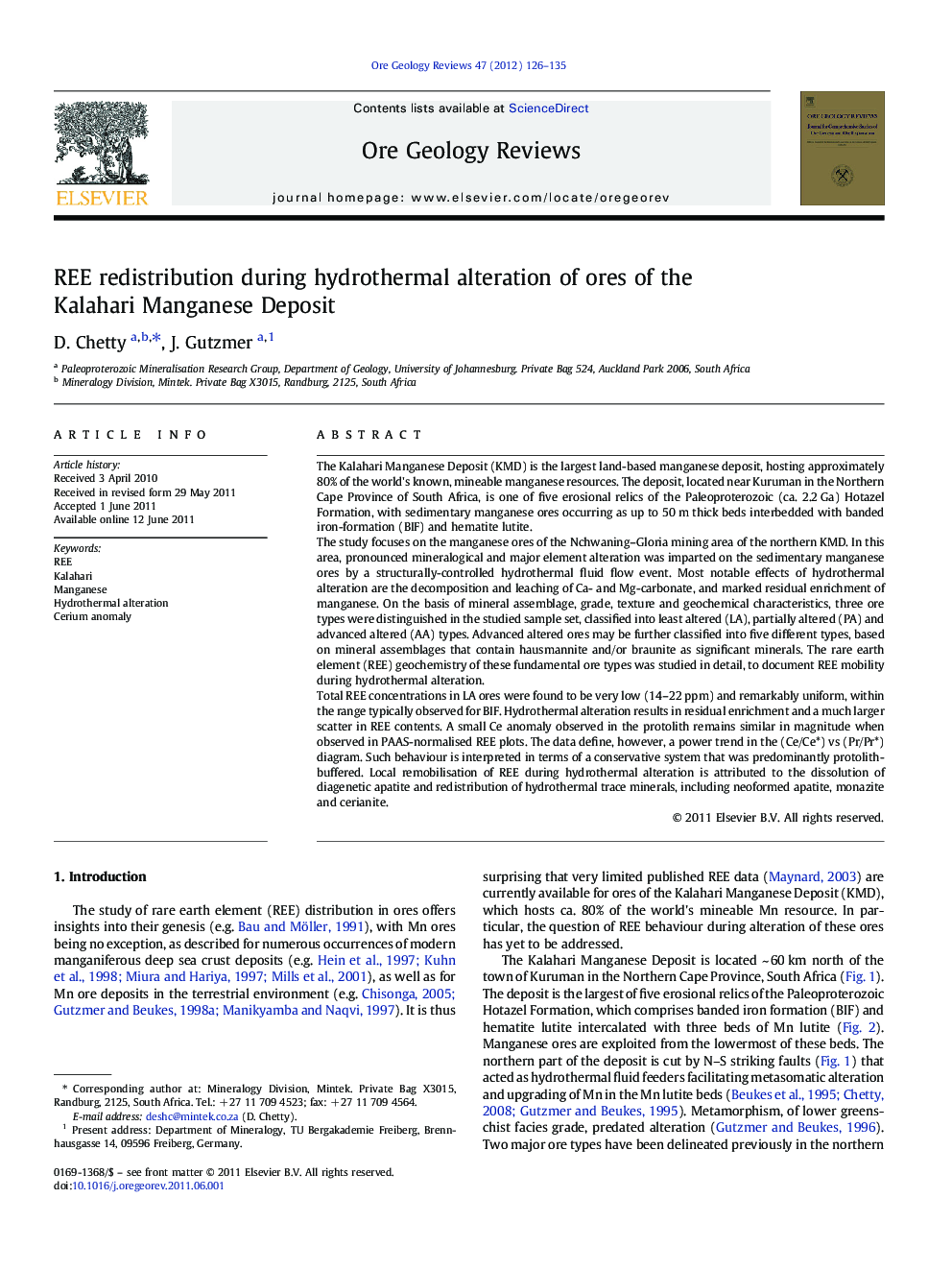| Article ID | Journal | Published Year | Pages | File Type |
|---|---|---|---|---|
| 4697682 | Ore Geology Reviews | 2012 | 10 Pages |
The Kalahari Manganese Deposit (KMD) is the largest land-based manganese deposit, hosting approximately 80% of the world's known, mineable manganese resources. The deposit, located near Kuruman in the Northern Cape Province of South Africa, is one of five erosional relics of the Paleoproterozoic (ca. 2.2 Ga) Hotazel Formation, with sedimentary manganese ores occurring as up to 50 m thick beds interbedded with banded iron-formation (BIF) and hematite lutite.The study focuses on the manganese ores of the Nchwaning–Gloria mining area of the northern KMD. In this area, pronounced mineralogical and major element alteration was imparted on the sedimentary manganese ores by a structurally-controlled hydrothermal fluid flow event. Most notable effects of hydrothermal alteration are the decomposition and leaching of Ca- and Mg-carbonate, and marked residual enrichment of manganese. On the basis of mineral assemblage, grade, texture and geochemical characteristics, three ore types were distinguished in the studied sample set, classified into least altered (LA), partially altered (PA) and advanced altered (AA) types. Advanced altered ores may be further classified into five different types, based on mineral assemblages that contain hausmannite and/or braunite as significant minerals. The rare earth element (REE) geochemistry of these fundamental ore types was studied in detail, to document REE mobility during hydrothermal alteration.Total REE concentrations in LA ores were found to be very low (14–22 ppm) and remarkably uniform, within the range typically observed for BIF. Hydrothermal alteration results in residual enrichment and a much larger scatter in REE contents. A small Ce anomaly observed in the protolith remains similar in magnitude when observed in PAAS-normalised REE plots. The data define, however, a power trend in the (Ce/Ce*) vs (Pr/Pr*) diagram. Such behaviour is interpreted in terms of a conservative system that was predominantly protolith-buffered. Local remobilisation of REE during hydrothermal alteration is attributed to the dissolution of diagenetic apatite and redistribution of hydrothermal trace minerals, including neoformed apatite, monazite and cerianite.
► REE geochemistry of different ore types in the Kalahari Manganese Field. ► REE mobility during hydrothermal alteration. ► Hydrothermal alteration leads to residual REE enrichment. ► A power trend observed in the Ce anomaly on a (Ce/Ce*) vs. (Pr/Pr*) diagram. ► Diagenetic apatite dissolution and small-scale redistribution in new trace minerals.
